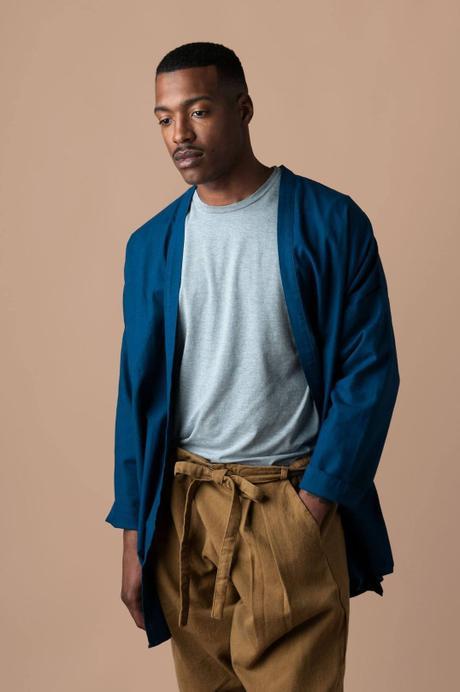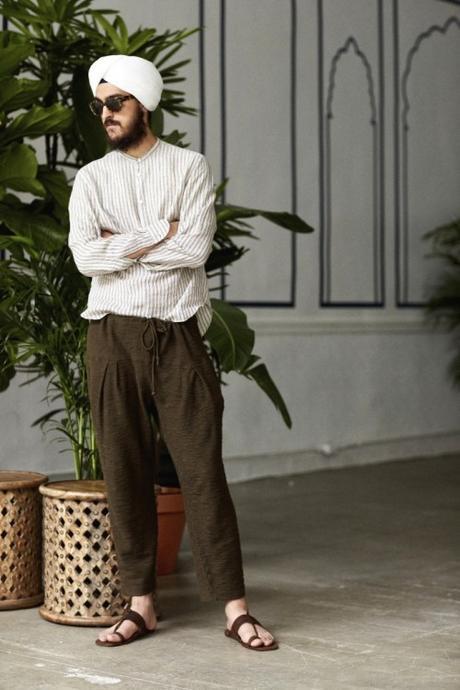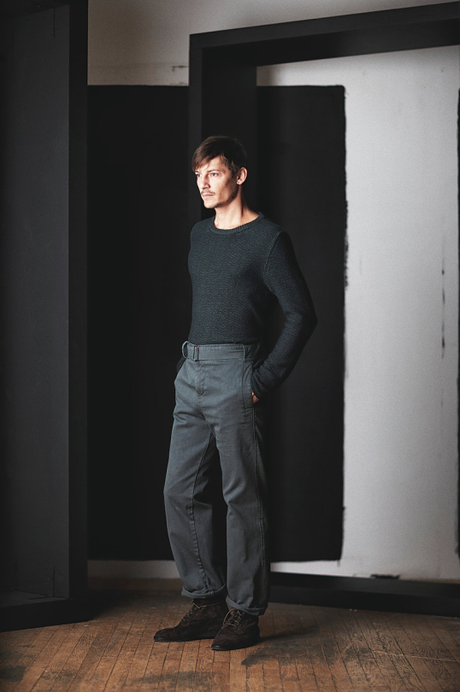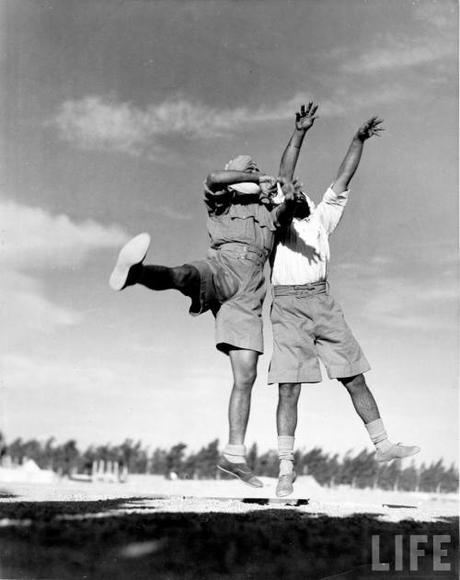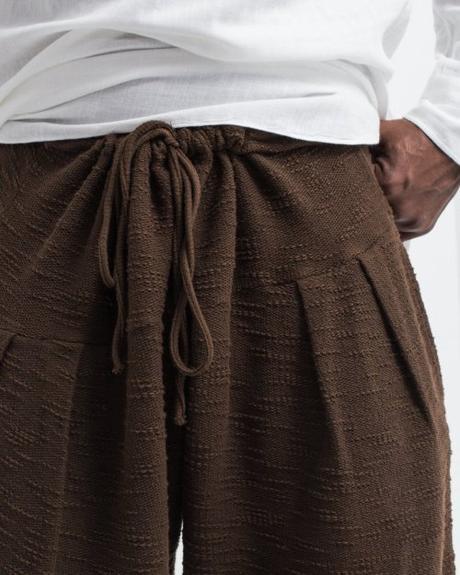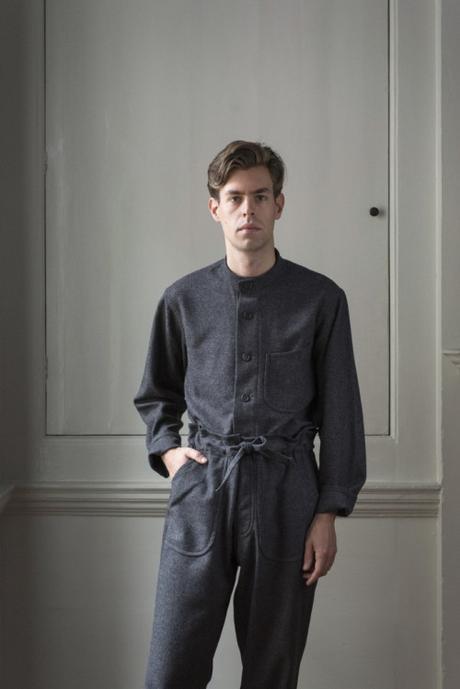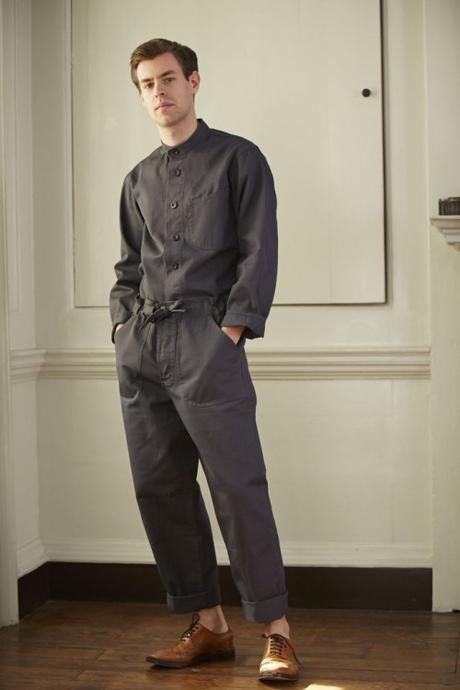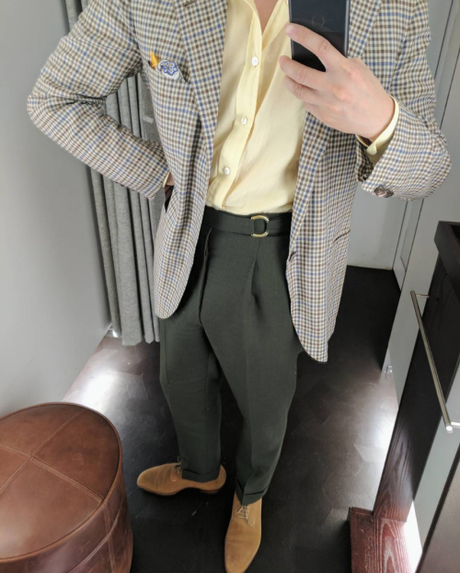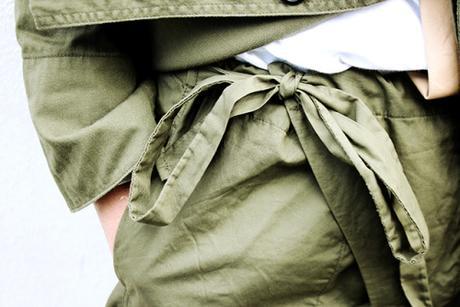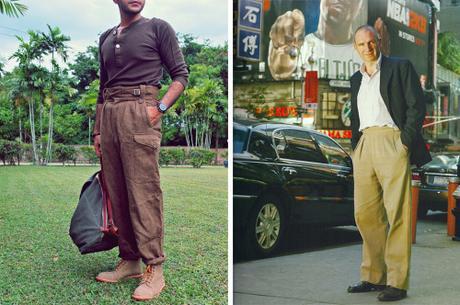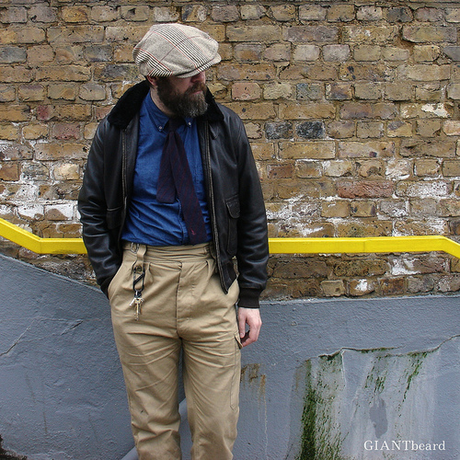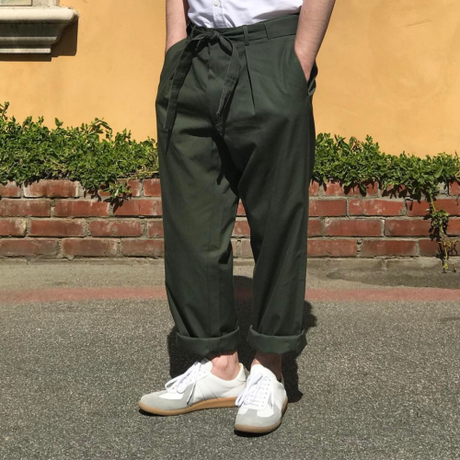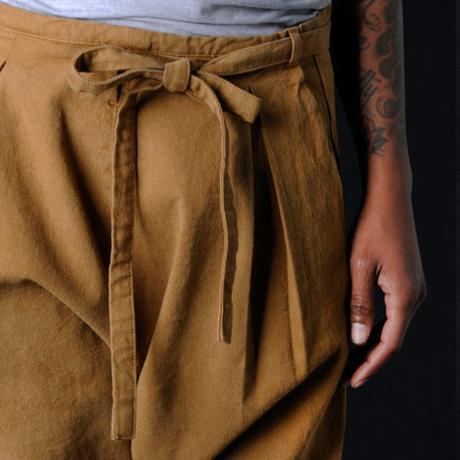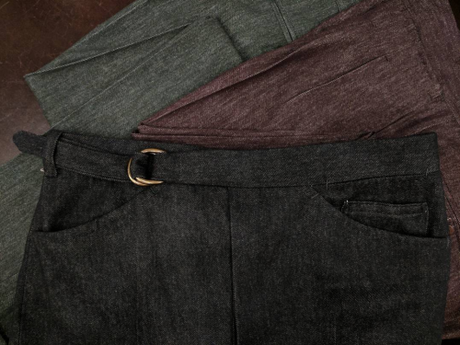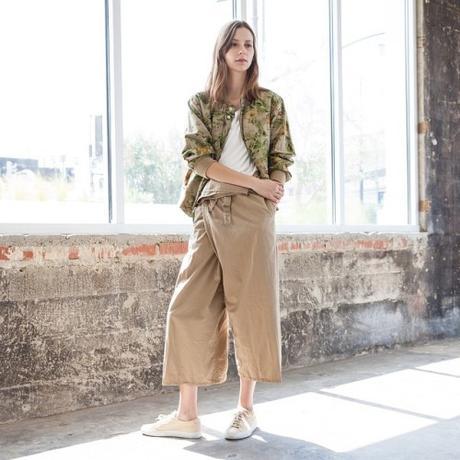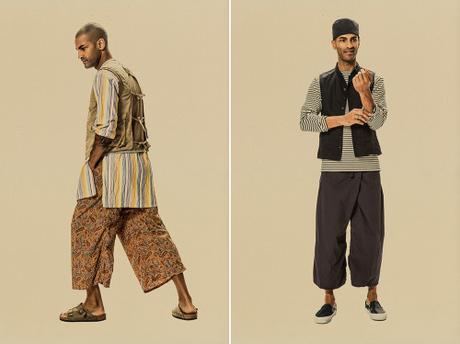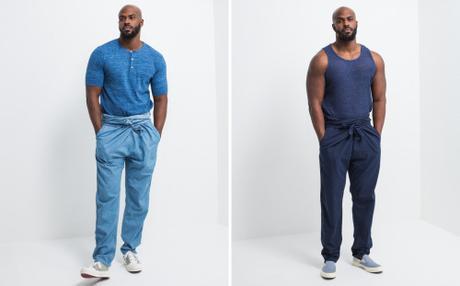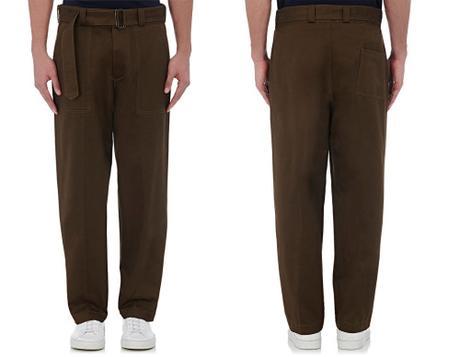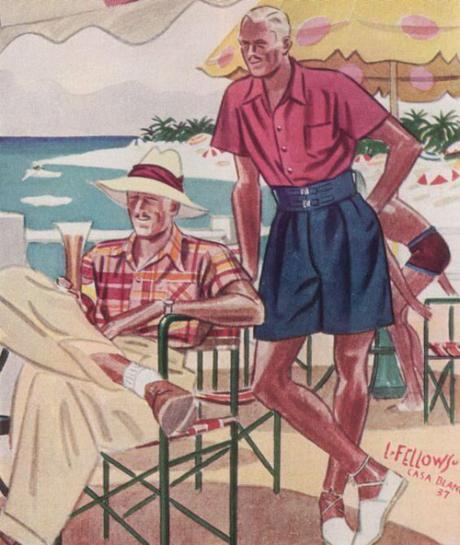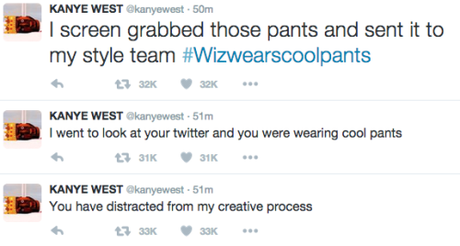
Most pants are made to visually disappear into the background of an outfit. A pair of gray flannel trousers set the stage for your shirt, tie, and jacket, just as jeans serve as the foundation for almost any causal ensemble. In the summer, however, when it’s too warm for layering, your shirt and trousers ought to do more than usual. I like slightly atypical tops this time of year. I’ve also been looking for pants with more distinctive closures.
Almost all trousers you’ll come across have a simple button- or zip-fly closure, with more sophisticated ones coming with what’s known as a “French fly” (also called a waist stay). That’s the hidden, interior tab that attaches to an extra button or two inside your pants, which relieves strain from the top of your zipper and allows the fly to lay flat. Some designers, however, pillage archives to come up with more unique systems. Some are easily wearable; others admittedly less so.
The more daring ones, such as Margiela’s “sailor pants,” often take after historical dress. Those multi-button designs are modeled after something Regency-era men used to wear on the whipping seas. And while they were once a favorite of Beau Brummell, they’re all but unwearable today except for men who have a lot of time on their hands. Similarly, while heritage-inspired brands such as Engineered Garments have made their versions of Thai fisherman pants – also known as Sabays, which is Thai for “comfortable” – the loose, wraparound style is maybe a little too close for comfort to culottes (unless you’re David Sedaris anyway). Blurhms’ wrap pants, I think, are a better alternative if you like that style. I just wish theirs fit a bit fuller.
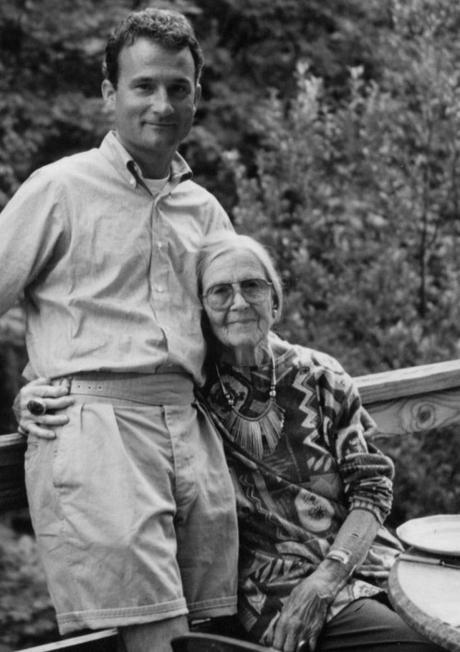
Not all atypical closure systems are so odd. The easiest to wear are Gurkhas, which come from when the British occupied North Africa and India – a time that left a terrible political legacy, but nevertheless continues to inspire in terms of style. They’re typically high waisted, made from heavy drill cotton, and characterized by their unique belting system. That weird rigging once allowed British officers to easily cinch their trousers as they lost weight. I love how they draw to mind all those beautiful safari images in old Banana Republic catalogs, before Banana Republic was bought out by The Gap.
You can find Gurkha pants and shorts these days at shops such as J. Peterman, What Price Glory, and Silvermans. If you don’t mind the price, Eidos also has some terrific ones this season made out of tonal navy seersucker. I just wish the roller buckles would stay cinched (they don’t have prongs like the originals). If you’re resourceful, you could replace them for a couple of bucks. Rubinacci also has a model they call “Manny,” which looks like it would be easier to wear with sport coats.
For something simpler and more relaxed, you can always go with drawstring pants. So long as you avoid anything that looks too close to Champion sweats, I think they go well with loose tops and unlined loafers. Stephan Schneider and Hartford have drawstring pants with slim leg lines, although I prefer the looser cuts at Old Town, Document, Frank Leder, and Epaulet (the last slimmed down their model from what you see in that photo, but the original fit is available via made-to-order).
I also really like Eidos’ “Agy Pajama Pants,” which draw from Rajasthani culture. When I interviewed Eidos designer Antonio Ciongoli a few days ago, he said of them: “Classic means a lot of different things to different people. If you go to India, you’ll see these everywhere on the street. If you see them, and think they’re beautiful, why wouldn’t you want to incorporate them into your wardrobe?” I’ve been thinking about getting a pair to wear with Blurhms’ thermal shirts and Singh & Sons’ suede slip-on shoes. Something for lounging around outside at a cafe when it’s too hot to do anything else.
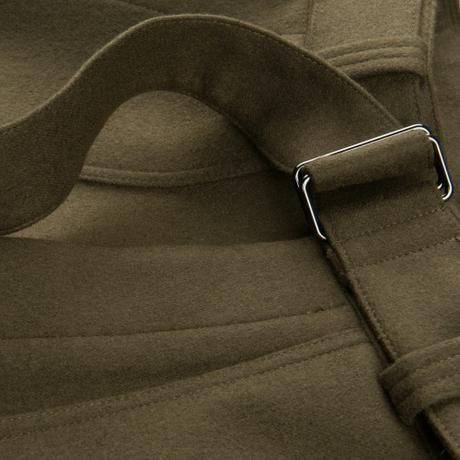
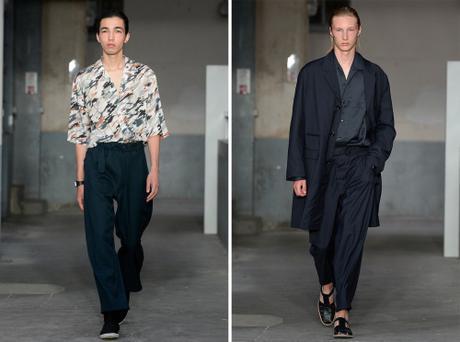
More than any other design though, I’m really into self-belted pants these days (like the ones you see above). They’re easier to close than Gurkhas, cleaner looking than drawstrings, and add a bit of visual interest to whatever else you’re wearing. I bought a wide, Melton wool pair from Tomorrowland last season and – while they’re not as easy to wear as slim gray flannels or jeans – they feel great with chunky sweaters and slightly oversized topcoats. The wider belt not only looks more refined than the options above, but it also allows for more precise cinching, so the waist never feels too tight.
The only problem is finding the right cut. Sage de Cret has them in shorts this season, but I can’t wear shorts. Niche has a model called “Over Pants,” but they look like they might be too baggy. Comoli has also done them in the past, but they don’t look to be available anywhere at the moment. The best options I’ve seen are from Lemaire, pictured above, which will be coming out next spring. For something a little cleaner and more tailored, Mark Cho recently designed a self-belted, D-ring trouser with Pommella, which would work better with a soft-shouldered sport coat and button-down collar. Those will be available at Pommella’s trunk shows at The Armoury.
To be sure, most of your trousers should probably have standard closures, but man can’t live on bread alone. While it’s always easier to have the focus of attention on the top half of your outfit, sometimes it’s nice to wear something a little more interesting below the belt. Or, in this case, just at the belt line.
(photos via The Sartorialist, Maxminimus, Unionmade, Eidos, Life Magazine, Gentry, Old Town, Mark Cho, Theo Osborn, Five, Anderson & Sheppard, Alpha Shadows, Barneys, Epaulet, Nepenthes, and Kanye West)
